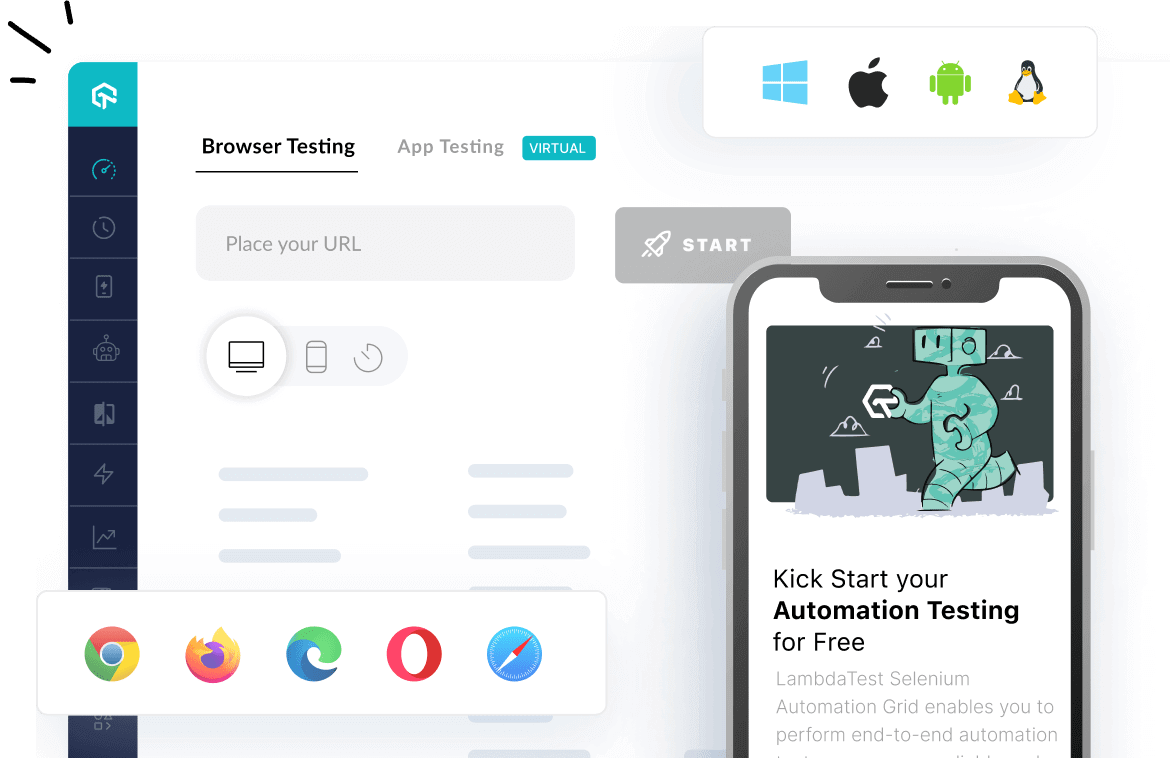How to use isKillSwitch method of org.evomaster.client.java.instrumentation.staticstate.ExecutionTracer class
Best EvoMaster code snippet using org.evomaster.client.java.instrumentation.staticstate.ExecutionTracer.isKillSwitch
Source:EMController.java
...90 * This is tricky, and mainly an issue when dealing with embedded driver, where the kill-switch91 * could impact when calling Driver methods using the SUT (eg, ctx.isRunning()).92 */93 private <T> T noKillSwitch(Producer<T> lambda){94 boolean previous = ExecutionTracer.isKillSwitch();95 ExecutionTracer.setKillSwitch(false);96 T t = lambda.call();97 ExecutionTracer.setKillSwitch(previous);98 return t;99 }100 private void noKillSwitch(Runnable lambda){101 boolean previous = ExecutionTracer.isKillSwitch();102 ExecutionTracer.setKillSwitch(false);103 lambda.run();104 ExecutionTracer.setKillSwitch(previous);105 }106 private void noKillSwitchForceCheck(Runnable lambda){107 /*108 Note: bit tricky for External. the calls on ExecutionTracer would have109 no impact, only those on sutController. it is needed for when driver communicates110 with SUT as part of driver operations, eg reset/seed state via an API call, which is111 done for example in Proxyprint. But for all other cases, it can be just an unnecessary112 overhead.113 */114 boolean previous = ExecutionTracer.isKillSwitch();115 sutController.setKillSwitch(false);116 lambda.run();117 sutController.setKillSwitch(previous);118 }119 @Path(ControllerConstants.INFO_SUT_PATH)120 @GET121 public Response getSutInfo(@Context HttpServletRequest httpServletRequest) {122 String connectionHeader = httpServletRequest.getHeader("Connection");123 if( connectionHeader == null124 || !connectionHeader.equalsIgnoreCase("keep-alive")){125 return Response.status(400).entity(WrappedResponseDto126 .withError("Requests should always contain a 'Connection: keep-alive'")).build();127 }128 assert trackRequestSource(httpServletRequest);...isKillSwitch
Using AI Code Generation
1public class TestEM {2 public static void main(String[] args) {3 if (ExecutionTracer.isKillSwitchEnabled()) {4 System.out.println("Kill switch is enabled");5 }6 }7}isKillSwitch
Using AI Code Generation
1@SpecClass("org.dummy.MyClass")2class MyClassTest {3 void test1() {4 @SpecMethod("public int org.dummy.MyClass.foo()")5 @ExpectedResult("0")6 @ExpectedResult("1")7 void test1() {8 @SpecInput("int x") int x = 1;9 @SpecInput("int y") int y = 1;10 @SpecInput("int z") int z = 1;11 @SpecInput("int w") int w = 1;12 @SpecInput("int v") int v = 1;13 @SpecInput("int u") int u = 1;14 @SpecInput("int t") int t = 1;15 @SpecInput("int s") int s = 1;16 @SpecInput("int r") int r = 1;17 @SpecInput("int q") int q = 1;18 @SpecInput("int p") int p = 1;19 @SpecInput("int o") int oAutomation Testing Tutorials
Learn to execute automation testing from scratch with LambdaTest Learning Hub. Right from setting up the prerequisites to run your first automation test, to following best practices and diving deeper into advanced test scenarios. LambdaTest Learning Hubs compile a list of step-by-step guides to help you be proficient with different test automation frameworks i.e. Selenium, Cypress, TestNG etc.
LambdaTest Learning Hubs:
- JUnit Tutorial
- TestNG Tutorial
- Webdriver Tutorial
- WebDriverIO Tutorial
- Protractor Tutorial
- Selenium 4 Tutorial
- Jenkins Tutorial
- NUnit Tutorial
- Jest Tutorial
- Playwright Tutorial
- Cypress Tutorial
- PyTest Tutorial
YouTube
You could also refer to video tutorials over LambdaTest YouTube channel to get step by step demonstration from industry experts.
Most used method in ExecutionTracer
- Object
- reset
- isKillSwitch
- setKillSwitch
- isExecutingInitSql
- setExecutingInitSql
- isExecutingAction
- setExecutingAction
- setAction
- increaseExpensiveOperationCount
- isTooManyExpensiveOperations
- isTaintInput
- handleExtraParamTaint
- handleExtraHeaderTaint
- handleTaintForStringEquals
- getTaintType
- exposeAdditionalInfoList
- getCurrentAdditionalInfo
- markRawAccessOfHttpBodyPayload
- addParsedDtoName
- addQueryParameter
- addHeader
- addStringSpecialization
- addSqlInfo
- markLastExecutedStatement
- completedLastExecutedStatement
- getInternalReferenceToObjectiveCoverage
- getNumberOfObjectives
- getNumberOfNonCoveredObjectives
- getNonCoveredObjectives
- getValue
- updateObjective
- executedNumericComparison
- executedReplacedMethod
- executedLine
- executingMethod
- updateBranch
- executingBranchJump
- addExternalServiceHost
- getExternalMapping
- hasExternalMapping
Try LambdaTest Now !!
Get 100 minutes of automation test minutes FREE!!

